32 European Sweet Pies: Tasty Treats from Across the Pond
Sweet pies from European artisan traditions represent culinary masterpieces that tantalize taste buds and reflect generations of baking expertise.
Delicate pastry techniques passed through families create remarkable flavor combinations that elevate simple ingredients into extraordinary desserts.
Regional techniques showcase distinctive cultural influences and time-honored baking approaches.
Small bakeries throughout Europe cultivate unique recipes with meticulous attention to texture and taste.
Handcrafted techniques transform basic ingredients into sublime culinary experiences that connect generations through shared flavor memories.
Artisan bakers invest passionate dedication into perfecting each delicate creation with remarkable precision and skill.
These sweet pies embody culinary artistry that transforms ordinary moments into extraordinary gastronomic celebrations: 32 irresistible recipes await you:
Artisan European Sweet Pies Baked to Perfection
Europe’s sweet pies are legendary for their buttery crusts and luscious fillings, think berries, custards, or nuts. Perfect for dessert, afternoon tea, or any special occasion.
Melopita
Melopita is a heavenly Greek dessert originating from Sifnos island that transforms fresh cheese, eggs, and honey into a magical crustless cake.
Mizithra cheese from sheep or goat milk gives this light pie its distinctive creamy texture and rich flavor profile.
Traditional bakers create the dessert as a round cake without a traditional pastry crust, highlighting the pure ingredients.
Greek families often serve melopita during celebrations and casual gatherings as a sweet treat.
Cinnamon sprinkled on top adds a warm, aromatic dimension to the dessert.
Honey drizzled over the surface enhances the pie's natural sweetness and creates a glossy finish.
Each slice offers a smooth, delicate balance between tangy cheese and sweet honey.
Regional variations exist across different Greek islands, making melopita a beloved regional specialty.
Geraardsbergse Mattentaart
Mattentaart is a traditional Flemish pastry from East Flanders featuring a delicate puff pastry pie filled with almond-flavored cheese curd known as mattenbrij.
Regional specialties from Geraardsbergen and Lierde depend on local dairy farms for authentic preparation using fresh milk, butter, and buttermilk.
Medieval origins trace back to the first Dutch cookbook from 1514 by Thomas van Der Noot, with historical significance highlighted by Pieter Bruegel the Elder's 1567 painting The Peasant Wedding.
Small and intricate, these pies showcase Belgium's rich culinary heritage through their unique texture and regional ingredients.
Bakers carefully craft each mattentaart to preserve centuries-old techniques passed down through generations.
Regional pride centers on maintaining traditional preparation methods that honor the pastry's cultural roots.
Flemish cuisine celebrates this delicate dessert as a symbol of local agricultural traditions and artisanal craftsmanship.
Szarlotka (Pie)
Szarlotka marks Poland's beloved national dessert, a double-crust apple pie celebrated for its distinctive crumbled top and versatile recipe variations.
Traditional versions feature shortcrust pastry layered with cooked or raw apples, often incorporating raisins for extra sweetness.
Polish bakers craft this classic dessert with remarkable flexibility, sometimes adding meringue beneath the crumble or mixing almonds into the topping.
Some creative adaptations include alternative fruits like peaches or pears alongside classic apple filling.
Regional differences showcase unique preparation methods across Poland, making each szarlotka slightly different.
Family recipes passed through generations contribute to the pie's cultural significance.
Homemade szarlotka typically emerges golden-brown and aromatic, promising a comforting slice of Polish culinary tradition.
Bakeries and home kitchens alike celebrate this simple yet sophisticated dessert as a beloved national treasure.
Appeltaart
Appeltaart emerges as Dutch Netherlands' cherished signature apple pie with distinctive characteristics that set it apart from traditional American versions.
Dutch bakers craft this deep-spring-form pastry with large apple chunks, currants, and raisins infused with warm speculoos spices like cinnamon and lemon juice.
Medieval baking traditions inspired its unique preparation, where monks once measured cooking time through prayer durations before precise oven controls existed.
Bakers carefully layer apples inside a buttery crust that becomes slightly drier than standard pie recipes.
Whipped cream topping, called slagroom, adds a classic finishing touch to the pie.
Bakeries across Netherlands continue preparing appeltaart using time-honored techniques passed through generations.
Culinary historians trace its origins back to Middle Age cooking practices that celebrated simple, robust ingredients.
Galatopita
Galatopita is a beloved Greek custard dessert featuring a silky semolina-based filling nestled in delicate layers of pastry.
Traditional recipes blend milk, eggs, butter, and sugar to create its signature creamy consistency.
Regional variations include wrapping the custard in phyllo sheets for extra texture and crunch.
Citrus zest often enhances the dessert's subtle flavor profile, adding a bright, aromatic note.
Greeks typically serve galatopita chilled, making it a refreshing treat for any gathering or celebration.
Some bakers dust the dessert with powdered sugar or cinnamon for an elegant finishing touch.
Unlike its cousin galaktoboureko, galatopita offers a lighter, more delicate dessert experience.
Sweet and smooth, this dessert represents a classic example of Greek culinary simplicity and comfort.
Banoffee Pie
Banoffee pie delights dessert lovers with its irresistible blend of sweet bananas, rich toffee, and creamy layers atop a crumbly biscuit base.
British restaurateurs Nigel Mackenzie and Ian Dowding created this iconic treat in the 1970s at The Hungry Monk restaurant in East Sussex.
Customers quickly fell in love with the unique combination of flavors, making the pie an instant sensation.
Combining the words "banana" and "toffee," the name perfectly describes its key ingredients.
Nestle's condensed milk tins often feature the recipe, spreading its popularity worldwide.
Restaurants and home bakers alike embrace this simple yet decadent dessert.
Dictionary entries now recognize banoffee pie as a distinct culinary creation.
Its global appeal continues to grow, delighting sweet tooths across continents.
Vlaai
Vlaai are traditional sweet pies from Limburg, Netherlands, featuring a unique yeast-based dough filled with creamy custard and crowned with crumbly streusel.
Germanic tribes first crafted these pies by drizzling dough with fruit juice or honey, transforming them into celebratory treats in monasteries.
Monks developed the recipe, which later became a staple in Maastricht for special occasions like weddings and birthdays.
Regional bakers now create multiple variations, including chocolate, rice pudding, and fruit-filled versions with cherries, strawberries, apples, and bananas.
Generations have passed down the recipe, maintaining its cultural significance in Dutch cuisine.
Bakeries across Limburg specialize in crafting these traditional pies with precision and care.
Authentic vlaai remains a beloved dessert that connects modern Dutch families to their historical culinary roots.
Each slice tells a story of tradition, flavor, and regional pride.
Finnish Blueberry Pie (Mustikkapiirakka)
Mustikkapiirakka are traditional Finnish blueberry pies featuring a buttery, sweet crust filled with wild Nordic bilberries or blueberries.
Finnish bakers create this dessert with a simple shortcrust pastry made from flour, butter, sugar, and eggs.
Bakers press the delicate dough into a tart pan and pre-bake it until lightly golden.
Bilberries or blueberries get mixed with sour cream, eggs, sugar, and a hint of vanilla or cardamom for rich flavor complexity.
Home cooks carefully spread this creamy berry mixture over the pre-baked crust.
Bakers return the pie to the oven until the filling sets and edges turn golden brown.
Nordic families often enjoy mustikkapiirakka as a summer dessert or afternoon treat.
Warm or chilled, this simple pie captures Finland's love for fresh berries and uncomplicated baking traditions.
Crostata
Crostata is an authentic Italian pastry featuring a buttery, crumbly crust filled with creamy cheese or fruit preserves that originated in medieval Italian kitchens.
Bakers traditionally use cherries, berries, apricots, or peaches as primary filling ingredients.
Historical records trace its culinary roots to 15th-century cookbooks like Libro de Arte Coquinaria by Martino da Como.
Latin origins of its name directly reference "crust", reflecting its signature pastry foundation.
Versatile preparation styles include open-faced designs or lattice-covered tops.
Regional Italian variations showcase different fruit selections and crust techniques.
Sweet and rustic, this dessert represents simple Mediterranean baking traditions.
Families often prepare crostata during seasonal celebrations and weekend gatherings.
Lemon Meringue Pie (Tarte Au Citron Meringuee)
Lemon meringue pie is a tantalizing dessert featuring a crisp shortcrust pastry base layered with zesty lemon custard and crowned by billowy meringue.
Swiss baker Alexander Frehse and Philadelphia's Elizabeth Coane Goodfellow are credited with early versions of this sweet creation.
Historical records suggest the first documented recipe emerged in the late 19th century, with some attributing its origins to botanist Emile Campbell-Browne.
Lemon custard combines fresh zest, juice, sugar, and egg yolks for a bright, intense flavor.
Meringue topping provides a cloud-like texture that contrasts perfectly with the tart filling.
Presidential favorites and nationwide celebrations like National Lemon Meringue Pie Day on August 15 highlight its cultural significance.
Bakers craft this dessert by carefully balancing citrus intensity with creamy sweetness.
Each slice promises a perfect harmony of textures and flavors that delights dessert lovers everywhere.
Milopita
Greek apple pie combines rustic comfort with traditional Mediterranean baking techniques, featuring a uniquely spiced pastry that elevates simple fruit into an extraordinary dessert.
Originating from regional Greek baking traditions, this pie blends crisp apples with warm cinnamon and buttery layers of handmade dough.
Greek home bakers typically create two distinct styles: a dense coffee cake-like version with soft, cinnamon-infused apples nestled in rich pastry, or a classic pie with flaky shortcrust encasing sweet fruit filling.
Cinnamon plays a starring role, transforming ordinary ingredients into a fragrant, nostalgic treat.
Regional variations across Greece reflect local orchards and family recipes, with some versions including nuts or additional spices.
Butter and fresh apples form the core ingredients, ensuring a moist and flavorful experience.
Each slice tells a story of Greek culinary heritage, connecting generations through a simple yet profound dessert.
Smulpaj
Smulpaj bursts with rustic Swedish charm as a traditional crumb-topped fruit pie featuring a buttery, crumbly surface spread over fresh seasonal berries.
Swedish households frequently prepare this simple dessert using a blend of flour, sugar, and butter pressed atop chopped blueberries or raspberries.
Summer gardens often inspire its creation with ripe, juicy berries picked moments before baking.
Regional variations include adding almonds or using different fruit combinations like rhubarb or strawberries.
Home bakers craft this dessert quickly with minimal ingredients and basic kitchen tools.
Sweet-tart flavors balance perfectly between crisp crumb topping and soft fruit base.
Scandinavian families serve smulpaj warm with vanilla ice cream or whipped cream.
Baking time typically ranges between 30-40 minutes at moderate oven temperatures.
Sharlotka
Sharlotka is a classic Russian apple pie celebrated for its incredibly light, fluffy texture and minimal ingredients that transform simple components into an elegant dessert.
Traditional recipes blend eggs, sugar, flour, and baking soda with thinly sliced apples layered in a distinctive pattern.
Russian families often prepare this cake as a quick and affordable treat that requires minimal baking skills.
Home bakers typically dust the finished pie with powdered sugar for an attractive presentation.
Variations include adding cinnamon or honey to enhance the apple flavor.
Regional differences may incorporate additional spices or nuts for complexity.
Generations have enjoyed this straightforward yet delicious dessert as a comforting staple in Russian households.
Best served warm, sharlotka pairs perfectly with tea or coffee.
Torta Della Nonna
Grandma's cake is a beloved Tuscan pastry pie featuring a silky custard cream nestled in a tender crust, generously sprinkled with toasted pine nuts and powdered sugar.
Italian families treasure this dessert for its simple yet sophisticated flavor profile.
Regional variations emerge through subtle ingredient tweaks like vanilla or lemon zest infusions.
Home bakers often personalize their version by experimenting with cream textures.
Some cooks incorporate ricotta for added richness.
Pine nuts provide a delightful crunch against the smooth custard base.
Sweet and subtle, this dessert represents comfort and tradition.
Each slice tells a story of generations sharing love through food.
Pithiviers
Pithiviers is a round French pastry pie distinguished by its distinctive spiral-scored golden dome revealing delicate layers of buttery puff pastry.
Named after its originating town in France, this elegant dish offers versatile fillings ranging from sweet almond cream and seasonal fruits to savory meats and vegetables.
Professional bakers carefully create its iconic dome shape by layering delicate pastry sheets and scoring intricate spiral patterns from the center.
Sweet versions frequently feature almond cream and fruit fillings like plums and cherries, while savory variations incorporate cheese, beef, chicken, or pork.
Traditionally served alongside coffee or as a standalone meal, pithiviers represents sophisticated French culinary craftsmanship.
French bakeries and home cooks prepare this pastry for special occasions and everyday enjoyment.
Its precise preparation requires skill to achieve the perfect golden-brown exterior and flaky texture.
Regional variations highlight local ingredients and personal recipe interpretations.
Limonnik
Limonnik represents a zesty Russian pie bursting with bright citrus flavors from whole crushed lemons, including their fragrant peels.
Bakers craft this summer dessert using a crisp shortcrust pastry shell that cradles a tangy lemon and sugar filling.
Russians prize this pie for its refreshing sour notes and intense aromatic profile.
Summer gatherings often feature limonnik as a cool, sweet-tart treat that balances rich meals.
Regional bakers in Russia carefully select fresh, ripe lemons to ensure maximum flavor intensity.
Traditional recipes pass through generations, maintaining authentic preparation methods.
Each slice delivers a perfect balance of sweet and acidic elements.
Russian families enjoy limonnik as a light, memorable dessert that captures summer's essence.
Rijstevlaai
Rijstevlaai is a luscious Dutch-Belgian dessert featuring a rich rice pudding filling nestled in a soft pastry crust, originating from the Limburg region's traditional baking practices.
Local bakeries specialize in crafting this sweet treat with meticulous attention to texture and flavor balance.
Regional celebrations like birthdays, weddings, and retirement parties frequently showcase this creamy dessert as a centerpiece.
Families often enjoy rijstevlaai during Sunday gatherings, serving it chilled for maximum enjoyment.
Germans also appreciate this dessert in border regions near the Netherlands.
Bakers create the pudding using simple ingredients like rice, milk, sugar, and eggs.
Traditional preparation involves cooking rice until creamy and smooth before pouring it into a pre-baked pastry shell.
Each slice offers a delightful combination of tender crust and silky rice pudding that melts in you mouth.
Karpouzopita
Karpouzopita are sweet watermelon pies originating from Milos island in Greece, featuring an ingenious method of transforming ripe summer watermelons into a unique dessert.
Greek bakers craft this specialty by mixing watermelon flesh with flour, sugar, thyme honey, and cinnamon into a smooth batter that gets spread across baking trays.
White sesame seeds generously coat the surface before baking transforms the mixture into a crispy-edged, pudding-like treat with a golden-brown crust.
Family recipes vary slightly, with some versions adding nuts or raisins for extra texture and flavor.
Traditional techniques ensure the pie remains soft in the center while developing a satisfying crunch on top and bottom.
Olive oil helps create a rich, moist consistency that highlights the watermelon's natural sweetness.
Greeks typically enjoy karpouzopita during summer months when watermelons are abundant and perfectly ripe.
Mince Pie
Mince pies are traditional British holiday pastries with a rich culinary history that bridges sweet and savory flavors.
Medieval English bakers originally crafted these treats using a combination of meat, fruits, and spices within a rectangular pastry shell reminiscent of Jesus' manger.
Religious symbolism initially connected these pies to both Easter and Christmas celebrations, with elaborate ingredient combinations signaling social status and wealth.
British families continue preparing these small handheld desserts during winter festivities, filling them with a sweet mixture of dried fruits, spices, and occasionally brandy.
Rectangular designs eventually transformed into the current round shape, maintaining their festive character.
Generations have passed down recipes that evolved from meat-based fillings to primarily fruit-based preparations.
Modern mince pies typically feature a buttery pastry crust surrounding a rich, spiced fruit mixture.
Bakeries and home kitchens across England still consider these small pies an essential Christmas tradition.
Le Poirat
Le poirat, a rustic French fruit pie from Berry, boasts a distinctive pear filling punctuated with an unexpected black pepper twist.
French bakers craft this traditional dessert using simple pie dough filled with sliced pears, sugar, and lemon juice for a balanced sweetness.
Bakers often enhance the filling's complexity by adding a splash of pear brandy or cognac for deeper flavor notes.
Regional recipes typically brush the pie's surface with eggwash and decorate it with intricate dough patterns before baking.
Subtle black pepper adds a gentle warmth that elevates the pear's natural sweetness.
Served warm or chilled, le poirat pairs beautifully with vanilla or pistachio ice cream.
Home bakers can easily recreate this regional specialty with basic ingredients.
Creme fraiche or whipped cream makes an elegant accompaniment to this simple yet sophisticated French dessert.
Almas Pite
Almas pite represents Hungarian comfort baking with its rustic, homemade apple pie crafted from generations of family recipes.
Sweet grated apples nestled between flaky, buttery pastry layers define this traditional dessert from Hungary's countryside.
Cinnamon and occasional hints of lemon zest or vanilla enhance the apple filling's natural sweetness.
Simple ingredients like flour, butter, sugar, and fresh apples transform into a warm, inviting treat.
Families traditionally prepare almas pite during autumn harvest seasons when apples are abundant.
Regional variations might include slight differences in pastry techniques or spice combinations.
Hungarian bakers often serve the pie slightly warm, allowing the fragrant filling to shine.
Home kitchens and rural bakeries across Hungary continue to keep this beloved dessert alive through careful preparation and shared memories.
Anke Pie
Anke pie is a luxurious Russian dessert featuring a complex three-stage baking process that creates a rich, layered sweet treat.
Russian bakers craft this unique pie by preparing a delicate pastry dough made from flour, butter, sugar, eggs, and lemon.
Multiple dough layers are meticulously baked and then carefully assembled with a tangy lemon sauce crafted from zest, juice, sugar, butter, and eggs.
Gentle cooking transforms the sauce into a thick, creamy filling that gets sandwiched between crisp pastry layers.
Crumbled dough pieces crown the pie, adding texture and visual appeal.
Precise temperature control and careful mixing ensure the pie's signature smooth consistency.
Lemon provides a bright, refreshing counterpoint to the buttery, sweet pastry base.
Each slice reveals intricate layers of flavor and technique that showcase traditional Russian baking expertise.
Mummentaart
Mummentaart is a beloved Luxembourg pastry showcasing regional baking traditions with its rustic apple-raisin filling and unique quark-based crust.
Luxembourg farmers originally crafted this hearty pie using simple, fresh ingredients from local orchards and dairy farms.
Sweet-tart apples blend seamlessly with warm cinnamon and plump raisins, creating a rich, comforting flavor profile.
Home bakers carefully prepare the dough by mixing flour, butter, quark, water, and salt into a smooth, tender pastry.
Slight acidity from the quark balances the dessert's sweetness, giving the tart a distinctive tang.
Sliced or cubed apples receive a generous sprinkle of sugar and lemon juice before being nestled into the crust.
Raisins add delightful bursts of sweetness throughout each slice.
Families traditionally serve Mummentaart during autumn gatherings, celebrating Luxembourg's agricultural heritage.
Pupinova Pita
Pupinova pita represents a classic Serbian plum pie celebrating Mihajlo Pupin's culinary memory from his American journey.
Serbian bakers craft this dessert with a delicate pastry base combining flour, margarine, sugar, eggs, milk, and baking powder.
Ripe plums and cherries form the luscious filling, enhanced with almonds and vanilla sugar.
Named after the renowned scientist who pioneered telecommunications, this pie connects cultural heritage with personal history.
Home bakers carefully layer sweet fruits between tender pastry sheets.
Generations have passed down this recipe as a tribute to Pupin's remarkable achievements.
Family gatherings often feature this beloved dessert as a nostalgic reminder of Serbian traditions.
Each slice tells a story of migration, innovation, and delicious memories.
Kainuu Potato Pie (Kainuun Ronttonen)
Kainuun ronttonen stands as a rustic Finnish pastry embodying regional culinary ingenuity, crafted from a unique blend of rye and wheat flour crusts traditionally filled with potatoes and tangy lingonberries.
Women in Finland's Kainuun region originally created these small open pies during late winter as a resourceful method to utilize remaining pantry ingredients.
Potatoes served a dual purpose, acting as both a binding element and natural sweetener when sugar remained scarce.
Regional bakers would carefully mix wheat and rye flours to form a delicate yet sturdy pastry shell.
Lingonberries added a characteristic tart brightness to the filling, complementing the earthy potato base.
Rural Finnish families considered ronttonen an economical and practical winter dish that maximized limited food resources.
These compact pies represented peasant cooking's clever adaptation to challenging seasonal constraints.
Each ronttonen told a story of survival, creativity, and respect for available ingredients through its simple yet meaningful preparation.
Marlborough Pie
Marlborough pie represents a sweet historical pastry crafted by early English settlers with roots in Massachusetts or England.
European immigrants developed this unique dessert as a clever way to use abundant apple harvests.
Bakers create its distinctive filling by combining apples, lemon juice, sherry, butter, sugar, eggs, and cream.
Traditional recipes incorporate warm spices like cinnamon and nutmeg for enhanced flavor complexity.
Home bakers carefully prepare a classic pie crust using flour, sugar, salt, butter, and ice cold water.
Smooth custard-like consistency sets this pie apart from standard apple desserts.
Small regions in New England continue making this traditional recipe during autumn gatherings.
Regional cookbooks often feature this nostalgic pie as a connection to colonial American culinary traditions.
La Peca Del Salbaneo
La peca del Salbaneo represents a stunning regional dessert from Vicenza foothills celebrating local ingredients through a complex layered pie.
This unique pastry blends Marostica cherries, Torcolato wine, and extra virgin olive oil into a harmonious culinary creation.
Bakers craft the dessert with a delicate olive oil-infused pastry base layered with smooth cherry puree.
Corn flour and Torcolato wine form a fragrant crumble middle layer that adds textural complexity.
Semi-candied cherries and sparkling sugar crystals decorate the pie's surface, creating visual and gustatory appeal.
Each ingredient highlights the agricultural richness of northeastern Italy's Vicenza region.
Torcolato wine and cherries provide sweet undertones while olive oil contributes a subtle regional character.
Appeltaat
Appeltaat is a luxurious German apple pie from Rhineland featuring a rich, wine-infused pastry loaded with tender apples and nutty almonds.
Regional bakers craft this dessert using a unique dough blended with butter, flour, sour cream, and lemon zest.
Thinly sliced apples simmer in vanilla, white wine, and sugar until perfectly soft and fragrant.
Raisins and chopped blanched almonds add sweet complexity to the pie's texture.
Cinnamon provides warm undertones throughout the dessert.
Traditional preparation involves carefully layering ingredients into a pie pan.
German families often serve this pie during autumn gatherings.
Wine in the recipe creates a distinctive flavor profile that sets Appeltaat apart from standard apple pies.
Crostata Al Torrone
Crostata al torrone embodies traditional Italian dessert artistry from Sarnano, Marche, featuring a flaky pastry shell filled with a luxurious nougat-like mixture of nuts and sweet ingredients.
Walnuts, hazelnuts, almonds, and pine nuts create its signature crunch and rich flavor profile.
Candied fruit adds bursts of sweetness throughout the dense filling.
Honey and sugar provide natural sweetness to balance the nutty elements.
Milk and eggs bind the ingredients together, creating a smooth, creamy texture.
Local bakers craft this dessert with meticulous care and generations of family techniques.
Each slice offers a complex blend of textures and flavors that celebrates regional culinary traditions.
Italians serve this dessert during special occasions and family gatherings as a cherished sweet treat.
Povitnek
Povitnek is a versatile Slovenian rolled pastry from Koroska region that transforms simple ingredients into a culinary treasure.
Stretched thin, wheat flour dough becomes a canvas for rich fillings of cottage cheese, eggs, and sour cream.
Skilled home cooks prepare this dish as both savory and sweet variations, depending on the chosen ingredients.
Pork cracklings often top the savory version, which pairs perfectly with meat dishes.
Sweet versions feature buttery fried breadcrumbs sprinkled over the surface.
Cooks carefully spread the filling across the thin dough before rolling and cutting it into sections.
Traditional preparation involves wrapping the pieces in cloth during cooking.
Each slice represents a delicate balance of texture and flavor that captures Slovenia's simple yet sophisticated culinary heritage.
Sirova Zafrknjaca
Sirova zafrknjaca is a rustic Slovenian pastry showcasing a unique blend of sweet and savory flavors from the Kozjansko region.
Local bakers craft this traditional pie by kneading flour, yeast, milk, and salt into a soft circular dough.
Cottage cheese, sour cream, eggs, and sugar create a rich, creamy filling that nestles in the pastry's center.
Bakers carefully fold the dough's edges around the mixture, sealing in the ingredients.
A final egg and sugar wash gives the pie a golden-brown sheen during baking.
Slovenia's countryside kitchens have perfected this simple yet satisfying treat over generations.
Each slice offers a harmonious balance of tangy cheese and subtle sweetness.
Generations have enjoyed this comforting dish as a beloved regional specialty.
Vrbovecka Pita
Vrbovecka pita are traditional Croatian sweet pies originating from Vrbovec that combine rustic charm with nutty, fruity flavors.
Regional bakers craft these pastries using a rich blend of flour, eggs, honey, and baking powder as core ingredients.
Hazelnuts and raisins provide delightful texture and crunch throughout the pie.
Sour cream adds moisture to the dough, creating a soft, tender crumb.
Rum infuses subtle warmth into each bite, enhancing the overall taste profile.
Fruit jam introduces sweet, tangy notes that complement the nutty base.
Powdered sugar dusts the top, creating an elegant finishing touch.
What Is the Difference Between Pies, Tarts, and Flans in European Cuisine?
Though pies, tarts, and flans may seem similar, each has distinct characteristics that set them apart in European culinary traditions:
Pies
Pies are typically made with a thicker, sturdy crust that can encase sweet or savory fillings completely or partially. The crust is often flaky or crumbly and may include a top layer.
Pies are hearty and portable, common in British and Central European cuisines, with fillings ranging from meat and vegetables to fruits and custards.
Tarts
Tarts usually have a thinner, buttery shortcrust pastry base with open tops, showcasing the filling. They are often elegant and refined, popular in French and Italian baking. Tarts focus on balancing crust crispness with delicate fillings like custards, fruits, or creamy cheeses.
Flans
Flans are versatile and vary regionally:

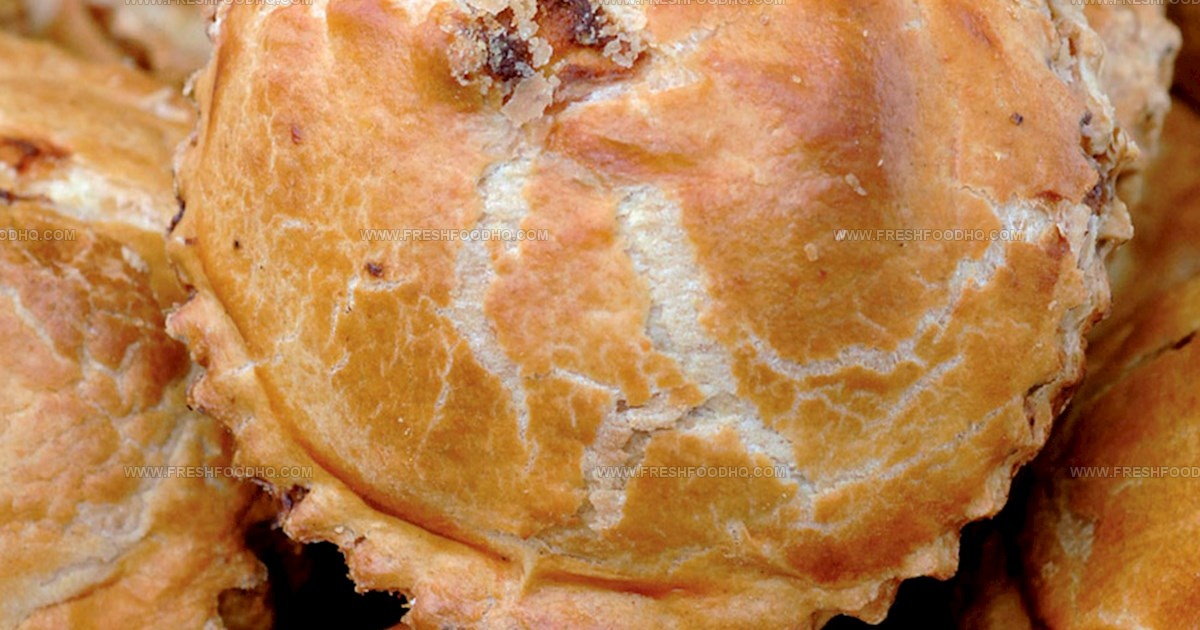
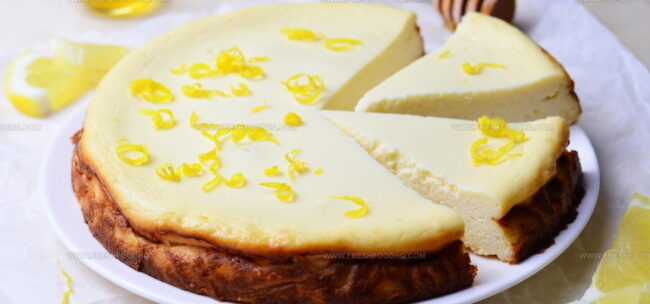
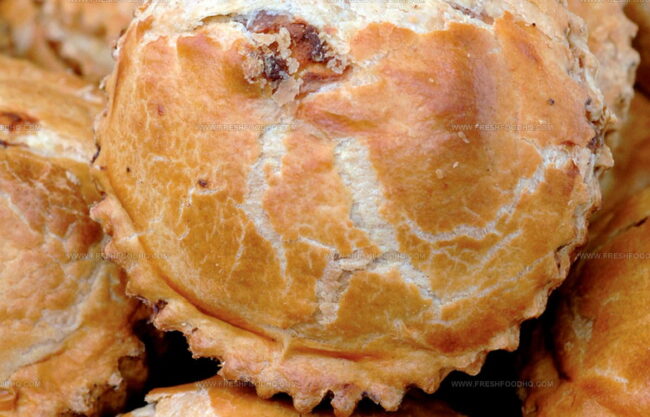
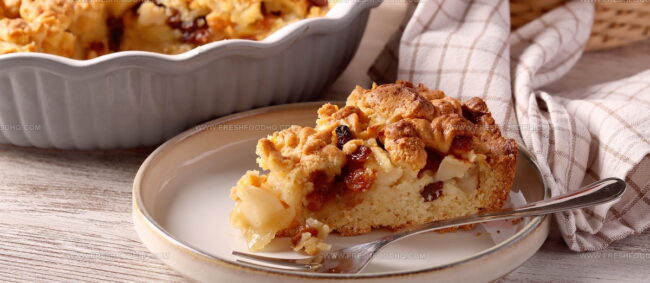
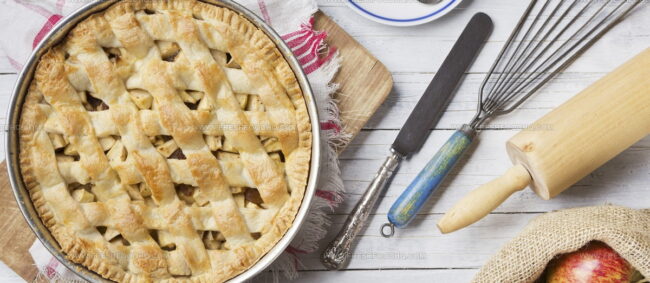
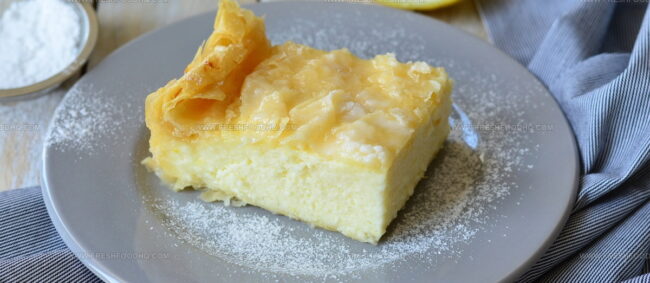

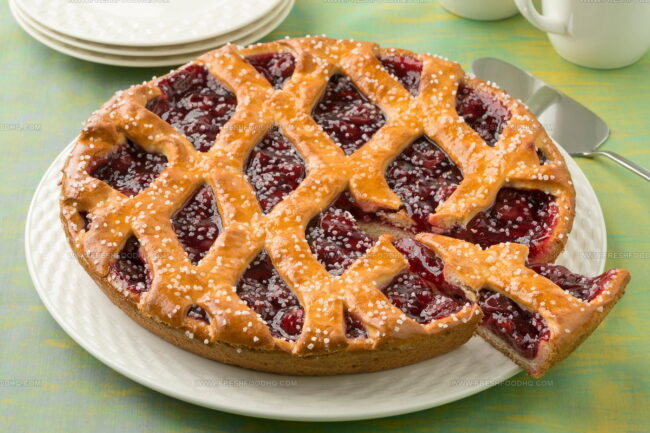
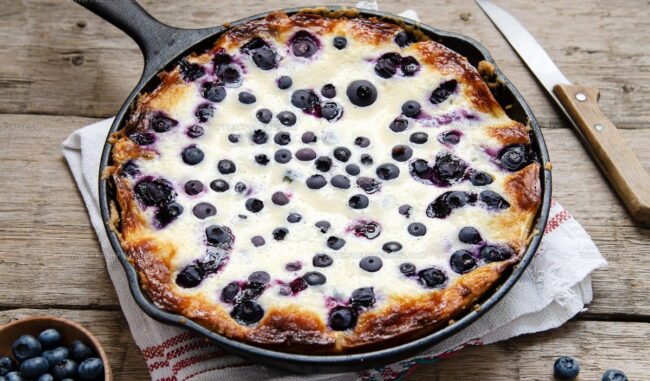
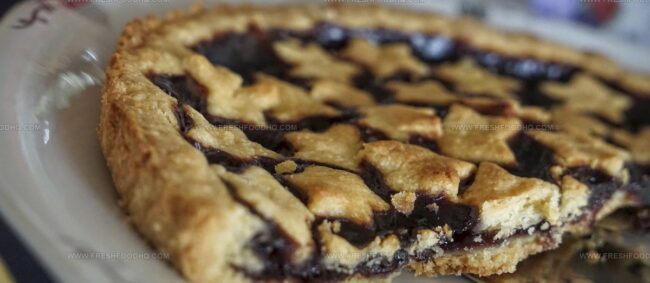

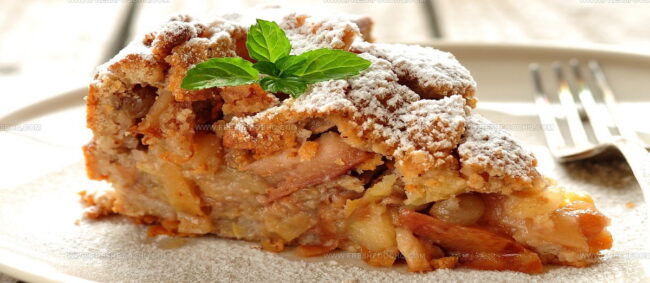
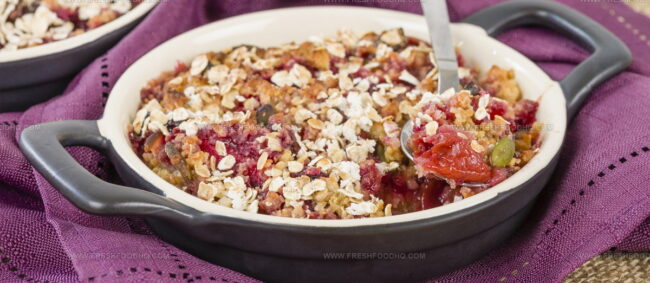
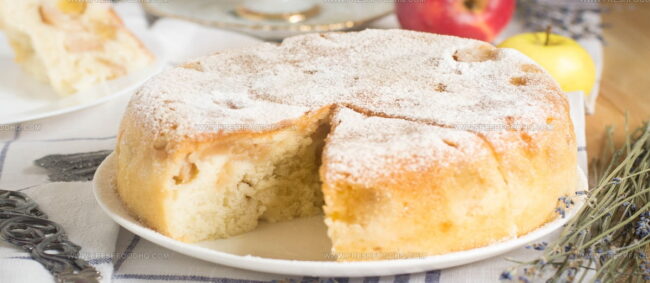
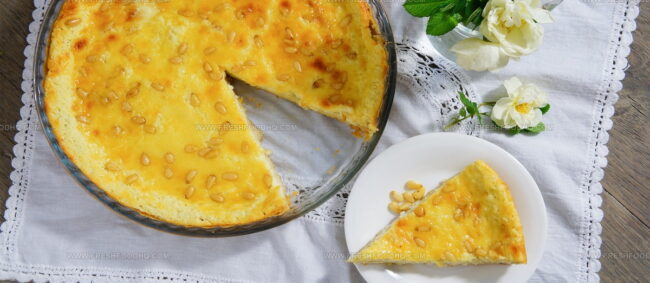
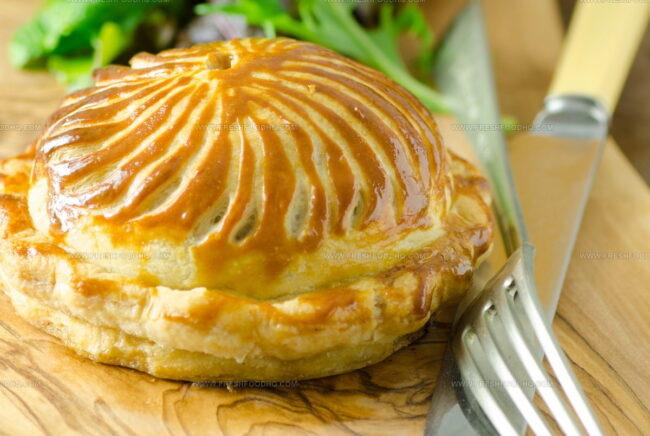
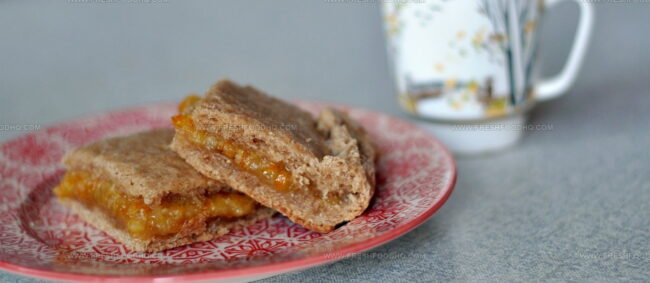
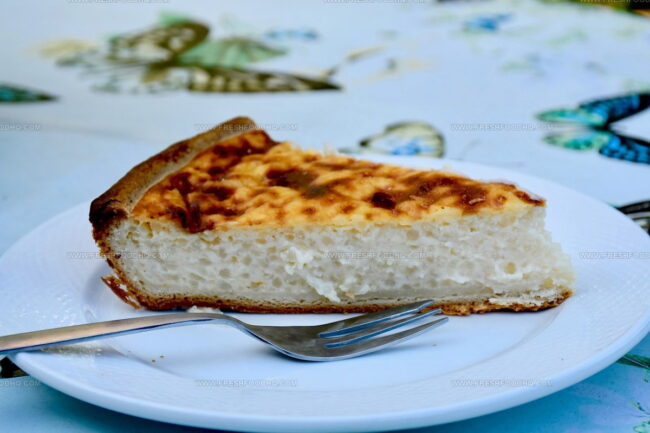
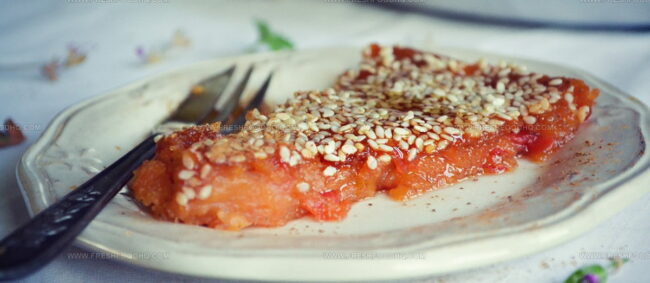

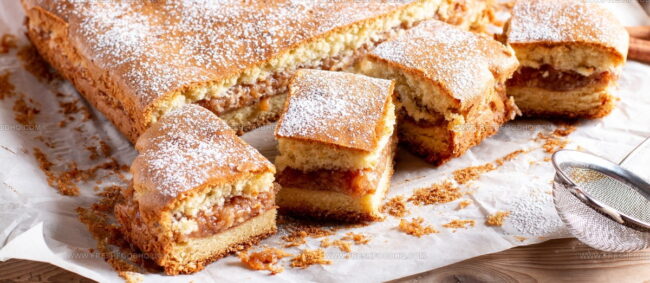

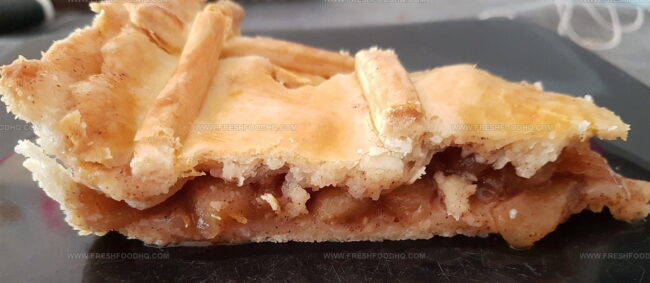
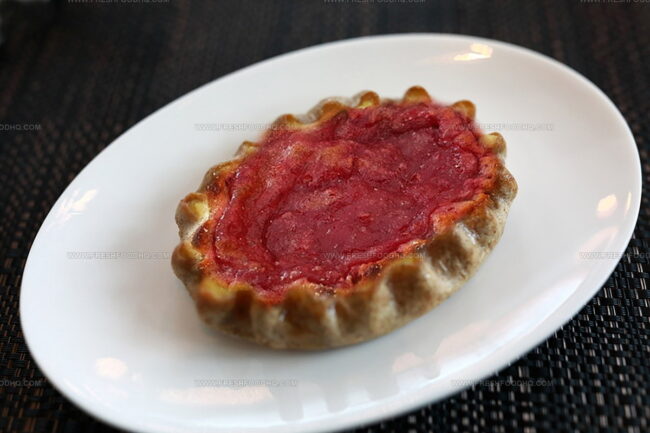
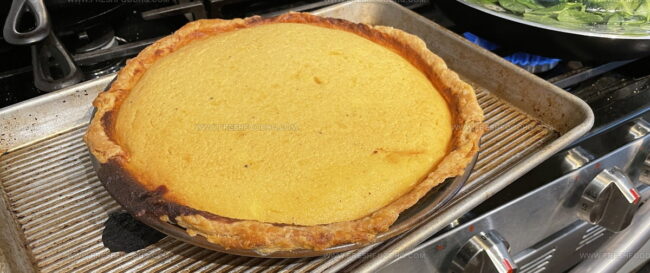

Ethan Caldwell
Founder & Culinary Innovator
Expertise
Farm-to-table cooking, Seasonal recipe creation, Culinary storytelling, Food photography and styling
Education
The Chef’s Academy (Indianapolis, IN)
Ethan didn’t just fall in love with food, he grew into it, surrounded by fields, farmers’ markets, and family meals that told a story.
After sharpening his skills at The Chef’s Academy, he took his passion straight into the farm-to-table movement, working side-by-side with local growers and seasonal flavors.
He believes every recipe should feel like a walk through a summer market: colorful, fresh, and full of possibility.
Outside the kitchen, Ethan’s idea of a perfect day is hiking mountain trails, digging into heirloom vegetables, and hosting casual dinners where seconds are always encouraged.